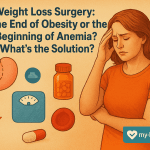This article is for informational purposes only and is not a substitute for professional medical advice. Always consult a healthcare provider for personal health decisions.
Understanding the Importance of Regular Screenings
Women’s health encompasses a wide range of issues, from reproductive health to chronic diseases. Regular screenings play a pivotal role in maintaining health and preventing serious conditions. But why are these screenings so crucial?
Screenings help detect diseases early, often before symptoms appear. For instance, mammograms can identify breast cancer at a stage when it’s most treatable. According to the American Cancer Society, early detection of breast cancer can lead to a 99% survival rate if caught in the localized stage. This statistic underscores the critical role of proactive health measures.
Pathophysiology of Common Conditions
Understanding the underlying mechanisms of diseases can highlight the importance of regular screenings. For example, breast cancer often begins with changes in the breast tissue, where cells grow uncontrollably. These changes can occur years before a lump is felt. Similarly, cervical cancer develops from precancerous changes in the cervix, often driven by persistent human papillomavirus (HPV) infection. Regular Pap tests can catch these changes early, allowing for interventions that can prevent cancer altogether.
Moreover, heart disease, the leading cause of death among women, often develops silently. Risk factors such as high blood pressure and elevated cholesterol contribute to atherosclerosis, where arteries become narrowed and hardened. Regular screenings can identify these risk factors early, enabling lifestyle changes or medications that may prevent heart attacks or strokes.
Types of Screenings Every Woman Should Consider
There are several key screenings that women should prioritize based on their age, risk factors, and health history. Here’s a breakdown:
1. Breast Cancer Screening
Women aged 40 and older are encouraged to have annual mammograms. Those with a family history of breast cancer may need to start earlier. The U.S. Preventive Services Task Force (USPSTF) recommends that women at average risk begin screening at age 50, but discussions with healthcare providers can tailor this to individual needs. It’s essential to understand that while mammograms are effective, they are not foolproof; some cancers may not be detected until later stages. Women should also perform monthly breast self-exams to monitor for any changes.
2. Cervical Cancer Screening
Starting at age 21, women should undergo Pap tests every three years. At age 30, women can switch to Pap plus HPV testing every five years, depending on their health history. This screening can detect changes in cervical cells before they develop into cancer. It’s important to follow up on abnormal results with further testing, as early intervention can significantly alter outcomes. Additionally, HPV vaccination can further reduce the risk of cervical cancer.
3. Heart Health Assessments
Heart disease is the leading cause of death among women. Regular screenings for blood pressure, cholesterol levels, and diabetes can help identify risk factors. The American Heart Association recommends that women start these assessments by age 20, especially if they have risk factors such as obesity or a family history of heart disease. Understanding one’s cholesterol levels and blood pressure can empower women to make lifestyle changes that reduce their risk.
4. Osteoporosis Screening
Women aged 65 and older should have bone density tests to assess their risk for osteoporosis. Early detection can lead to preventive measures that strengthen bone health. The National Osteoporosis Foundation suggests that women with risk factors, such as a family history of fractures, be screened earlier. This is crucial, as osteoporosis can lead to debilitating fractures that severely impact quality of life. Weight-bearing exercises and adequate calcium and vitamin D intake are essential for maintaining bone health.
5. Mental Health Screenings
Mental health is just as crucial as physical health. Regular screenings for conditions like depression and anxiety can help women receive the support they need. The U.S. Preventive Services Task Force recommends screening for depression in adults, including pregnant and postpartum women. Mental health conditions can often go unnoticed, yet they have profound effects on overall well-being. Engaging in regular physical activity, maintaining social connections, and seeking professional help when needed can enhance mental health.
Barriers to Regular Screenings
Despite the benefits, many women face barriers to accessing regular screenings. These can include:
- Financial Constraints: Lack of insurance or high deductibles can deter women from seeking necessary screenings.
- Time Constraints: Balancing work, family, and personal commitments can make it challenging to prioritize health.
- Lack of Awareness: Some women may not be aware of the recommended screenings or their importance.
Addressing these barriers is essential for improving women’s health outcomes. Healthcare providers can assist by offering resources and support to help women navigate these challenges. For instance, community health programs often provide free or low-cost screenings to underserved populations. Additionally, using telehealth services can save time and make it easier to access care.
Myth vs. Fact
| Myth | Fact |
|---|---|
| Screenings are only for sick people. | Regular screenings are preventive measures that can catch diseases early when they are most treatable. |
| All women need the same screenings. | Screening recommendations vary based on age, health history, and risk factors. Individualized plans are crucial. |
| Screenings are too expensive. | Many insurance plans cover routine screenings, and there are programs available to assist those without insurance. |
| Only older women need screenings. | Women of all ages can benefit from screenings, as some conditions can develop early in life. |
| Screenings are painful and invasive. | While some screenings may cause discomfort, many are quick and non-invasive, such as blood pressure checks and self-exams. |
Patient Vignette: Sarah’s Journey
Meet Sarah, a 45-year-old mother of two. Juggling work and family, Sarah often postponed her annual check-ups. After a friend encouraged her to schedule a mammogram, she discovered a small lump in her breast. Thanks to early detection, Sarah underwent treatment and is now cancer-free. Her story highlights the importance of regular screenings and taking charge of one’s health. It’s a reminder that prioritizing health can lead to life-saving outcomes.
FAQs About Women’s Health Screenings
What age should women start getting regular health screenings?
Women should begin regular screenings at age 21 for cervical cancer and at age 40 for breast cancer. However, individual risk factors may necessitate earlier screenings.
How often should women have mammograms?
Women aged 40 and older should have annual mammograms, while those at average risk may begin biennial screenings at age 50.
Are there screenings for mental health?
Yes, mental health screenings are recommended for all adults, including pregnant and postpartum women, to identify issues like depression and anxiety.
What if I can’t afford screenings?
Many health insurance plans cover routine screenings, and there are community programs available that provide low-cost or free services.
Can I skip screenings if I feel healthy?
Even if you feel healthy, regular screenings are vital for early detection of conditions that may not present symptoms until later stages.
What should I do if I receive abnormal screening results?
If you receive abnormal results, it’s crucial to follow up with your healthcare provider for further evaluation and potential next steps. Early intervention can make a significant difference.
Can lifestyle changes reduce my risk for diseases?
Absolutely! Healthy lifestyle choices, such as a balanced diet, regular exercise, and avoiding tobacco, can significantly lower your risk for many diseases, including heart disease and certain cancers.
Key Takeaways
- Regular screenings are essential for early detection of serious health conditions in women.
- Screening recommendations vary by age, health history, and risk factors.
- Barriers such as cost and time can impact access to screenings.
- Awareness and education about the importance of screenings can improve health outcomes.
- Individualized screening plans can enhance preventive care.
Key Takeaways
- Regular screenings are essential for early detection of serious health conditions in women.
- Screening recommendations vary by age, health history, and risk factors.
- Barriers such as cost and time can impact access to screenings.
- Awareness and education about the importance of screenings can improve health outcomes.
- Individualized screening plans can enhance preventive care.
References
- American Cancer Society. (2022). Breast Cancer Early Detection. Retrieved from https://www.cancer.org
- U.S. Preventive Services Task Force. (2021). Screening for Cervical Cancer. Retrieved from https://www.uspreventiveservicestaskforce.org
- National Osteoporosis Foundation. (2021). Clinician's Guide to Prevention and Treatment of Osteoporosis. Retrieved from https://www.nof.org
- American Heart Association. (2022). Heart Disease and Stroke Statistics. Retrieved from https://www.heart.org
- World Health Organization. (2023). Women’s health. Retrieved from https://www.who.int
- Centers for Disease Control and Prevention. (2022). Depression Among Women. Retrieved from https://www.cdc.gov








Post a comment